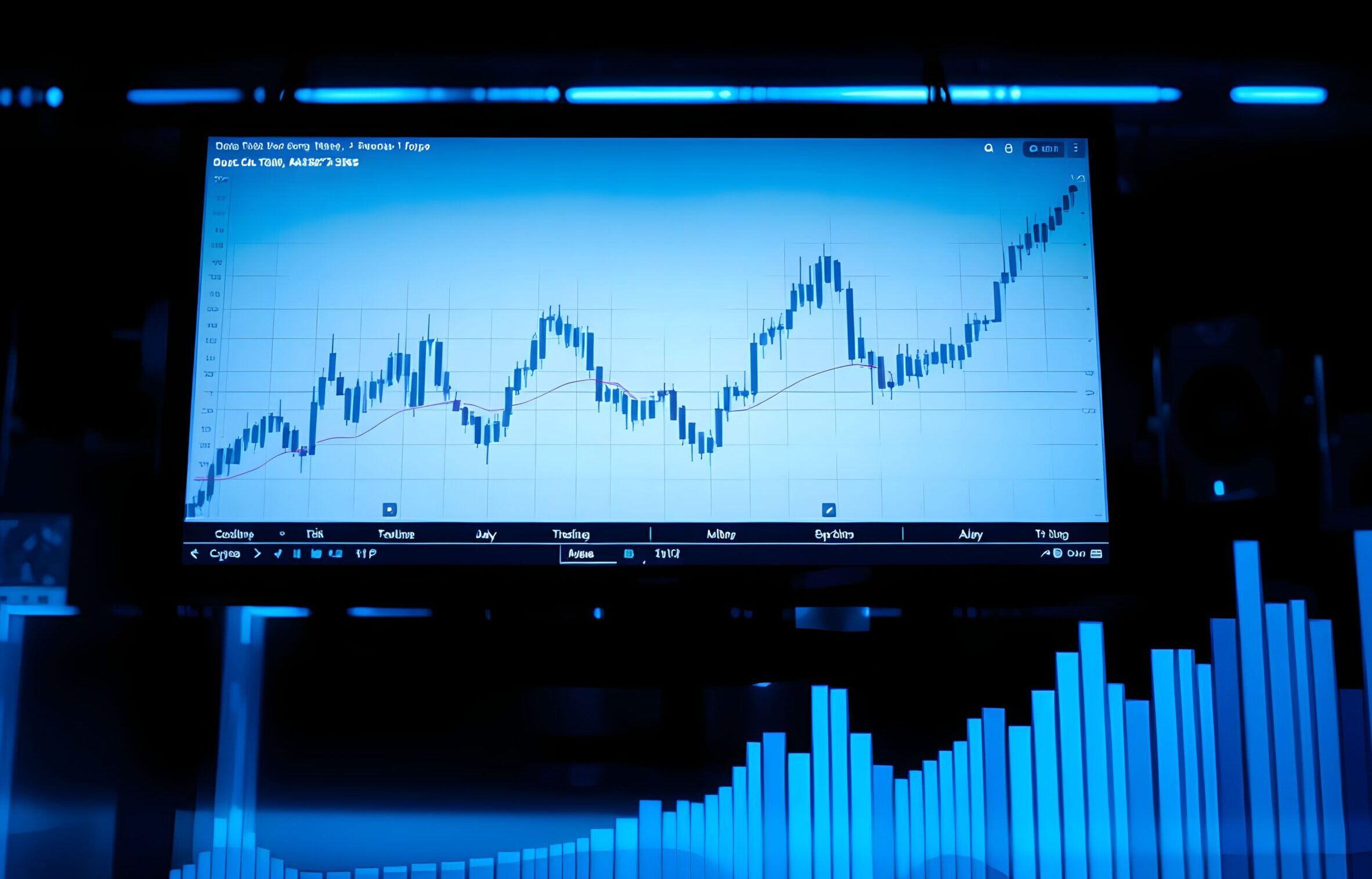
Financial markets saw a surge in optimism as the Dow Jones futures climbed by 250 points following the release of the December Consumer Price Index (CPI) report. The CPI data revealed that inflation is cooling faster than expected, fueling hopes of a potential pause in the Federal Reserve’s interest rate hikes. This development has sparked confidence among investors and provided a sense of relief for sectors previously under pressure due to monetary tightening.
For months, persistent inflation has led to aggressive interest rate hikes aimed at stabilizing prices. However, the latest data has given markets a sense of optimism, signaling that these measures may finally be yielding results. The rally in Dow futures reflects the broader market’s expectations for economic stability and a potential shift in monetary policy.
This article delves into the details of the CPI report, its immediate market impact, implications for Federal Reserve policy, sectoral effects, and the overall economic outlook.
Key Details of the Inflation Report
The December CPI report offered much-needed relief for investors and policymakers alike. The overall CPI rose by 0.2% month-over-month, a figure below the anticipated 0.3%. Year-over-year inflation slowed to 3.4%, marking a significant improvement from previous months and reaching the lowest level since mid-2021.
Core inflation, which excludes volatile food and energy prices, also rose by 0.2% month-over-month, showing a similar deceleration. The decline was primarily driven by easing energy prices and slower growth in housing costs, two critical components of inflation. Gasoline prices fell by 2.3%, contributing significantly to the overall moderation in inflation.
Housing costs, a persistent driver of inflation throughout 2024, showed early signs of stabilization. Rent growth decelerated, and the broader housing market displayed signs of cooling, reflecting the impact of higher mortgage rates. Food inflation also moderated, with grocery prices experiencing the slowest growth in over a year.
Supply chain improvements and reduced consumer demand contributed to the downward trend in inflation. Additionally, the Federal Reserve’s aggressive rate hikes have dampened borrowing and investment, further reducing inflationary pressures.
While the report offers a promising outlook, risks remain. External factors such as geopolitical tensions, energy supply disruptions, or unexpected increases in consumer demand could reignite inflationary pressures. For now, however, the data indicates progress toward the Federal Reserve’s long-term inflation target of 2%.
Immediate Market Reactions
The release of the CPI report sparked a rally in the stock market, with Dow Jones Industrial Average futures rising by 250 points. The S&P 500 and Nasdaq also experienced significant gains, climbing by 1.2% and 1.5%, respectively. These increases underscored widespread investor optimism across various sectors.
The bond market responded positively as well, with Treasury yields falling sharply. The 10-year yield dropped by 15 basis points to 4.45%, reflecting increased demand for government bonds. This decline in yields suggested that investors anticipate a more dovish stance from the Federal Reserve in the coming months.
Technology stocks were among the biggest beneficiaries, given their sensitivity to interest rate changes. Companies like Apple, Microsoft, and Nvidia saw notable gains during pre-market trading. Financial stocks also performed well, particularly large banks, which tend to benefit from reduced market uncertainty.
The volatility index (VIX), often referred to as Wall Street’s “fear gauge,” fell significantly, highlighting reduced anxiety among investors. This drop indicated confidence in the market’s ability to weather economic uncertainties.
Global markets mirrored the optimism seen in the U.S. European and Asian indices rallied, while commodities such as oil stabilized, and gold prices edged higher, reflecting a safe-haven demand.
Despite the positive momentum, analysts urged caution. They emphasized that while inflation has cooled, it remains above the Federal Reserve’s target, and further monetary policy actions could still be on the horizon.
Implications for Federal Reserve Policy
The Federal Reserve’s monetary policy trajectory remains a focal point for financial markets. The latest inflation data has significantly altered expectations, reducing the likelihood of additional rate hikes.
Interest rate futures, which provide insight into market expectations for Federal Reserve actions, now indicate a near-zero probability of a rate hike at the next Federal Open Market Committee (FOMC) meeting. This represents a dramatic shift from earlier expectations when concerns about persistent inflation led to predictions of further tightening.
Federal Reserve Chair Jerome Powell has emphasized the importance of a data-driven approach to policymaking. In recent remarks, Powell noted that while progress on inflation is encouraging, the central bank remains vigilant. The risk of re-accelerating inflation or persistent wage pressures could influence future decisions.
The Fed’s dual mandate—promoting maximum employment and maintaining stable prices—complicates its approach. While inflation has cooled, the impact of higher rates on economic growth and labor markets must also be considered. A premature pause in rate hikes could risk undermining the progress made thus far.
Policymakers within the Federal Reserve are divided on the path forward. Some argue for maintaining current rates to assess the cumulative effects of past hikes, while others see room for modest tightening if inflation proves more resilient.
The CPI report reinforces the importance of balancing inflation control with broader economic stability. As the Fed navigates these challenges, its communications will play a critical role in shaping market expectations and investor sentiment.
Sectoral Impacts and Stock Market Performance
The impact of the CPI report varied across sectors, with some industries benefiting more than others. Technology stocks emerged as clear winners, buoyed by expectations of a slower pace of interest rate hikes. Growth-oriented companies, particularly in the semiconductor and cloud computing industries, experienced significant gains.
Financial stocks also performed well, with major banks gaining momentum. A stable interest rate environment tends to support banking profitability, as it encourages borrowing and investment. However, regional banks faced continued pressure due to concerns about reduced loan demand.
Consumer discretionary sectors, including retailers and travel companies, rallied as well. Lower inflation increases consumer spending power, which directly benefits these industries. Meanwhile, defensive sectors such as utilities and consumer staples experienced more muted performance, reflecting reduced demand for safe-haven investments.
Real estate investment trusts (REITs) saw gains as stabilizing interest rates improved the outlook for borrowing costs. This trend was particularly evident in residential and commercial real estate markets, where higher rates had previously dampened activity.
Investor Sentiment and Broader Economic Implications
Investor sentiment has undergone a significant shift in response to the CPI report. The data has instilled confidence in the Federal Reserve’s ability to manage inflation without triggering a recession, boosting market optimism.
The report’s implications extend beyond financial markets. For households, slower inflation translates to increased purchasing power and reduced financial stress. For businesses, it means lower costs and improved profitability. These factors collectively contribute to a more favorable economic outlook.
However, risks remain. Uncertainty surrounding global energy markets, geopolitical tensions, and potential disruptions to supply chains could pose challenges. Additionally, the lagging effects of previous rate hikes may still weigh on economic growth.
Looking ahead, the focus will remain on upcoming economic data, including employment figures and manufacturing activity. These reports will provide further clarity on the economy’s trajectory and the Federal Reserve’s potential response.
The Dow’s 250-point jump following the light inflation report marks a pivotal moment for financial markets. The data signals progress in the fight against inflation, offering a path toward economic stability. While challenges persist, the report provides a foundation for cautious optimism among investors and policymakers alike.
As markets continue to digest the implications of this report, the focus will remain on the Federal Reserve’s next steps and the broader economic landscape. For now, the rally in futures reflects renewed confidence in the resilience of the U.S. economy.
Feel free to check out our other website at : https://synergypublish.com

